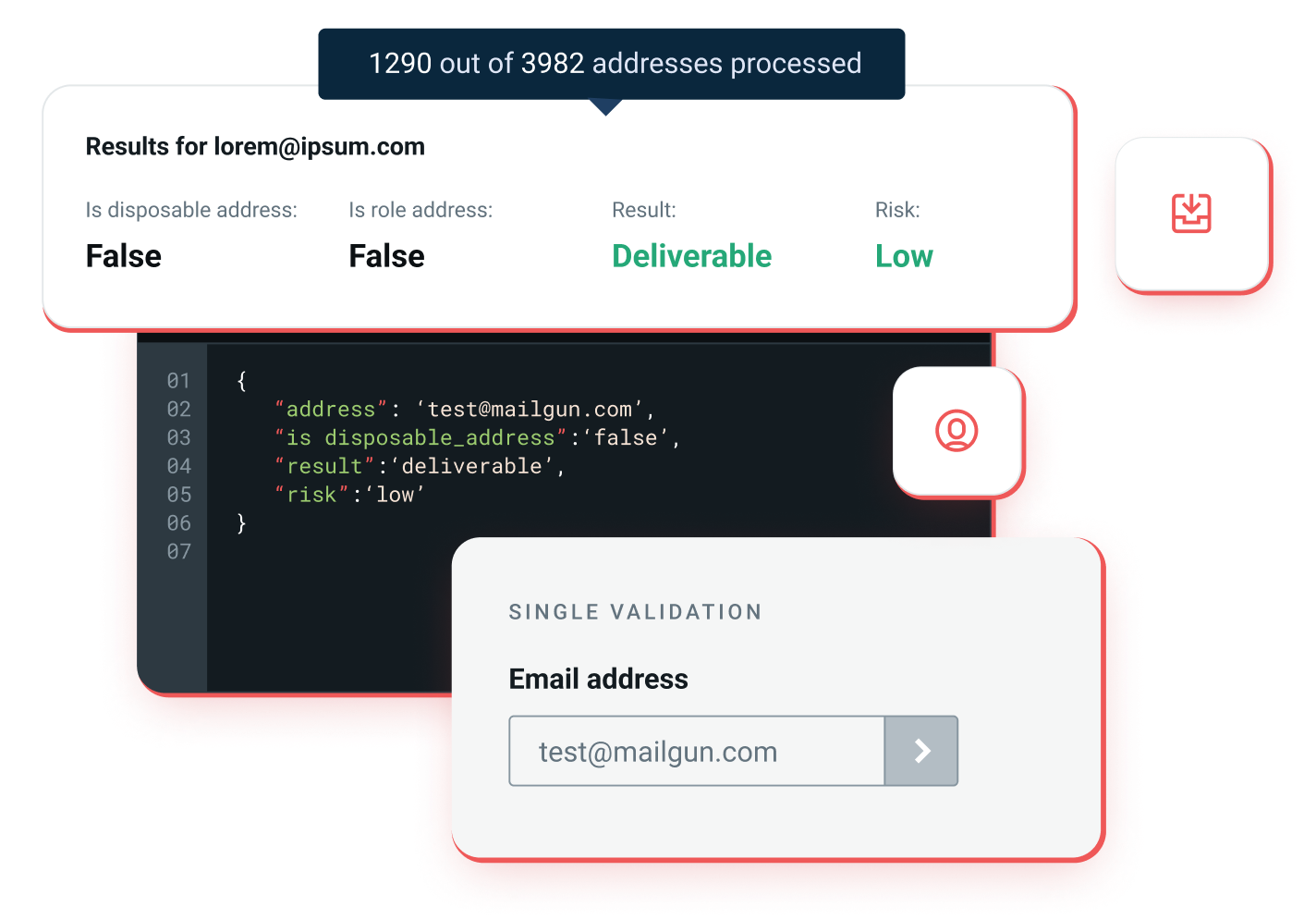Build email validation directly into web forms with Mailgun’s API
Mailgun’s powerful email validation API helps you maintain good list hygiene so you can focus on what matters: the messages you’re sending.
Real-time integration with our API
Email server verification and results return delivered in under 200 ms
Grammar, spelling, and email provider verification
Open-source library to modify the email validator for your own use case


UNMATCHED ACCURACY
Reach more inboxes with our email validation API
Unlike standalone validation tools, our API cross-references your email list against our database of over 450 billion emails to flag undeliverable and high-risk addresses before you hit send.
Send more. Pull bad email addresses from your list in real time and improve sender reputation while lowering bounce rates by up to 21%
Send smarter. Use our proprietary engagement data for more personalized targeting and increase open rates by up to 65%
THE INDUSTRY’S FASTEST EMAIL VALIDATION API TOOL
Maximize email efficiency and drive revenue
One bad email address can damage your email program - multiply that by tens, hundreds, or thousands and you will see a drop in inbox placement, engagement, and overall email ROI (maybe even land on a blocklist).
Integrate the industry’s fastest email validation API directly into your platform to systematically remove invalid and high-risk email addresses in real time, leveraging Mailgun’s technology to instantly identify disposable addresses.


PROTECT YOUR EMAIL SENDER REPUTATION
Remove disposable email addresses and minimize risk
Bad actors are working tirelessly to find new ways to manipulate your systems and create new (illegal) opportunities for themselves. And now that disposable email addresses are widely available, it makes organic email list building that much harder for legitimate senders.
Our email validation API is able to identify most types of disposable addresses, so you have one less thing to worry about when building your email lists the right way.
An easy API for email address validation
Curate a list of real people interested in your content, products, or services so that every lead is a lead you can use.
Mailbox/MX verification
Scrub bad email addresses across providers like Gmail, Hotmail, Yahoo, and more.
Disposable addresses
Flag disposable email addresses and spammers using long number/letter strings.
RFC grammar rule check
Weed out common form typos and misspellings like “@outlooks” instead of “@Outlook.”
Disposable address verification
Filter out incorrect or misspelled email addresses with grammar and syntax checks.
New or risky domain analysis
Confirm domains with MX DNS, and A record lookups plus SMTP analysis and parsing.
Role-based address verification
Send to people and not shared @help or @support addresses.
"Mailgun email validations API is simple and incredibly accurate. It allows our customers to make changes to their email address quickly, which only adds to the product's value-add."
Joe Dan Gaylean
VP, Software Development at Cinemark
A MORE RELIABLE EMAIL VALIDATION API
Create a competitive edge
Every email address processed is checked against a database of cached data that comes from the over 450 billion emails we deliver every year as a leading email service provider. Plus, we also check against data that comes directly from the mailbox providers themselves for an unmatched level of performance.





